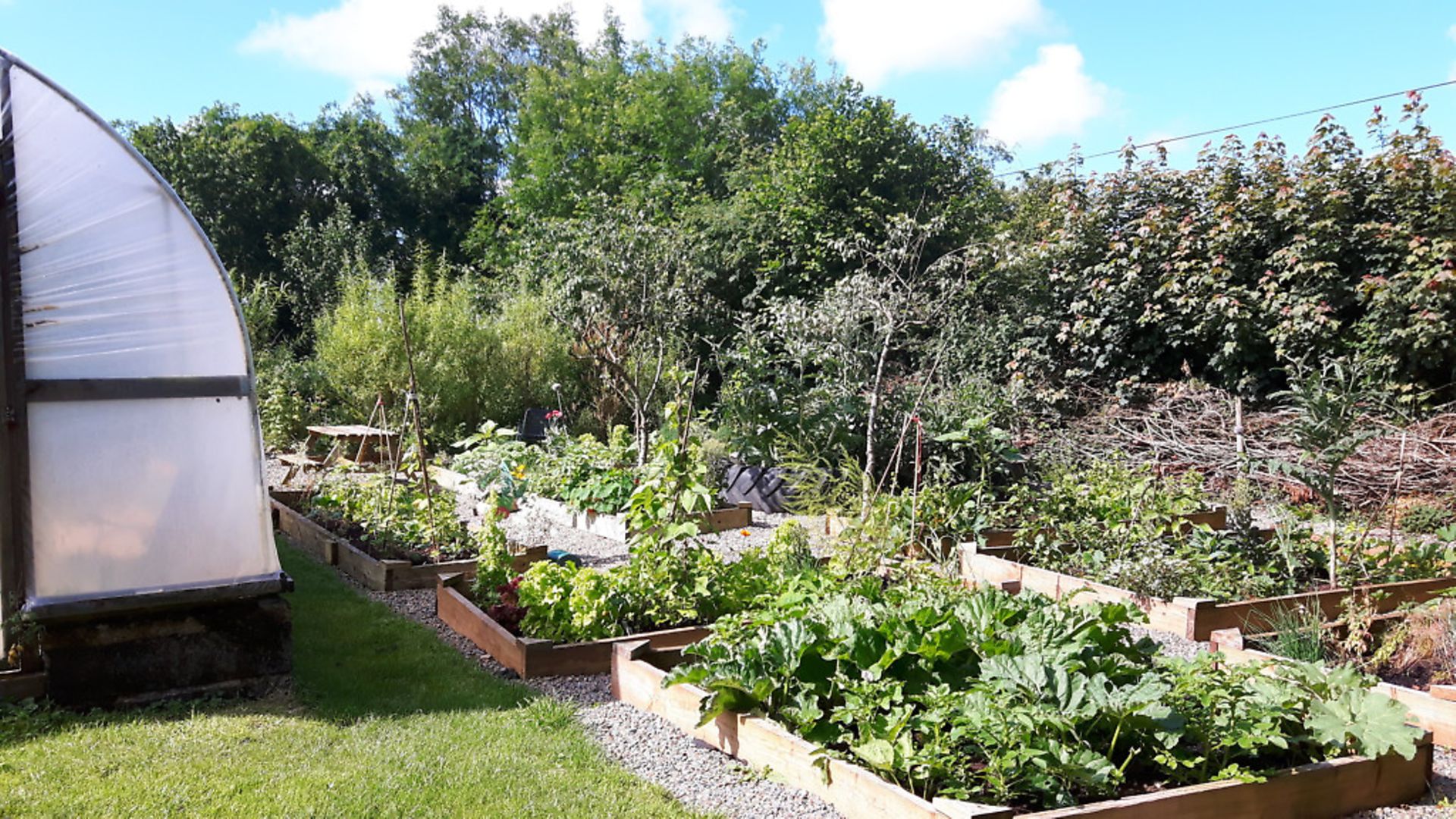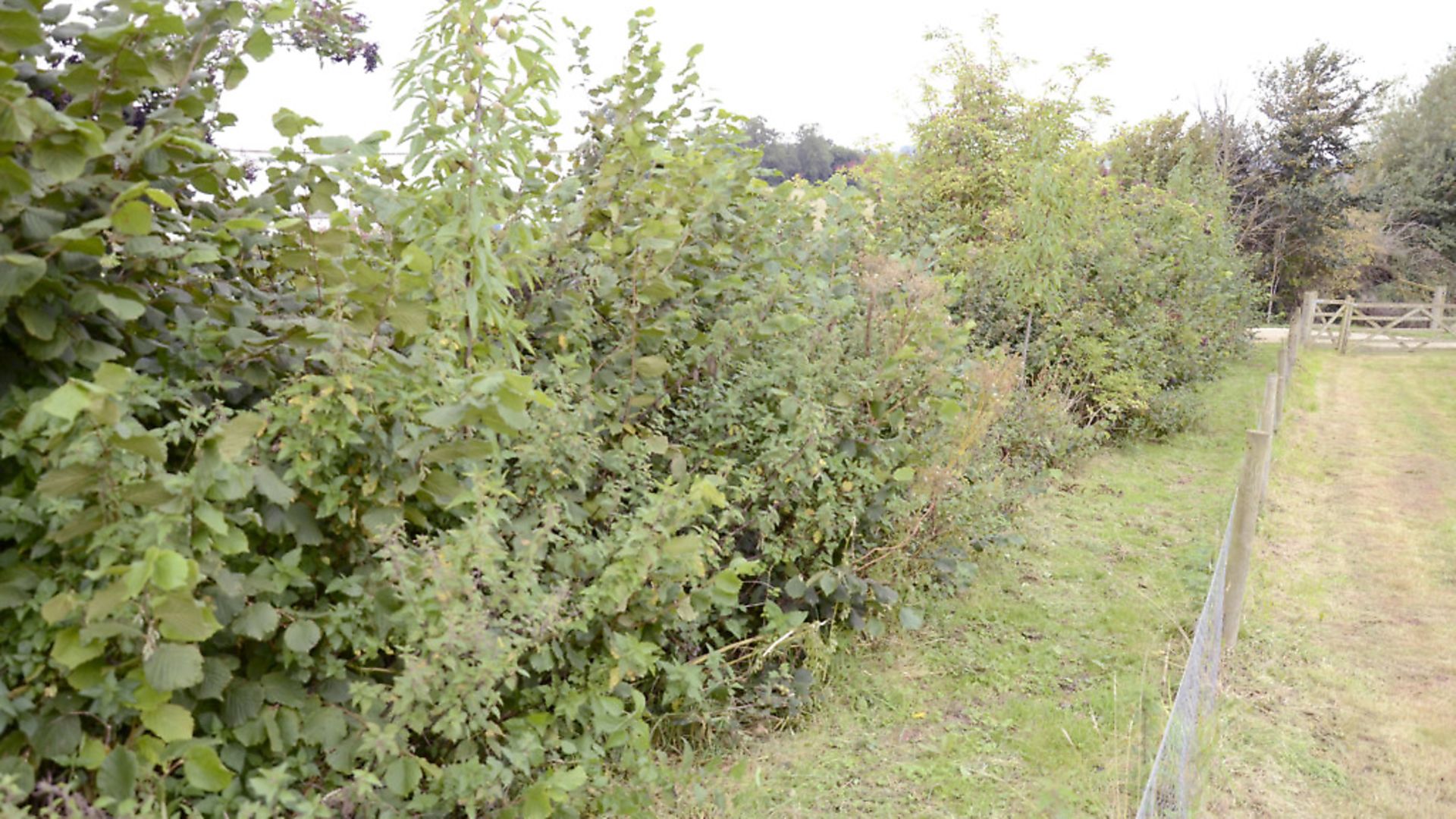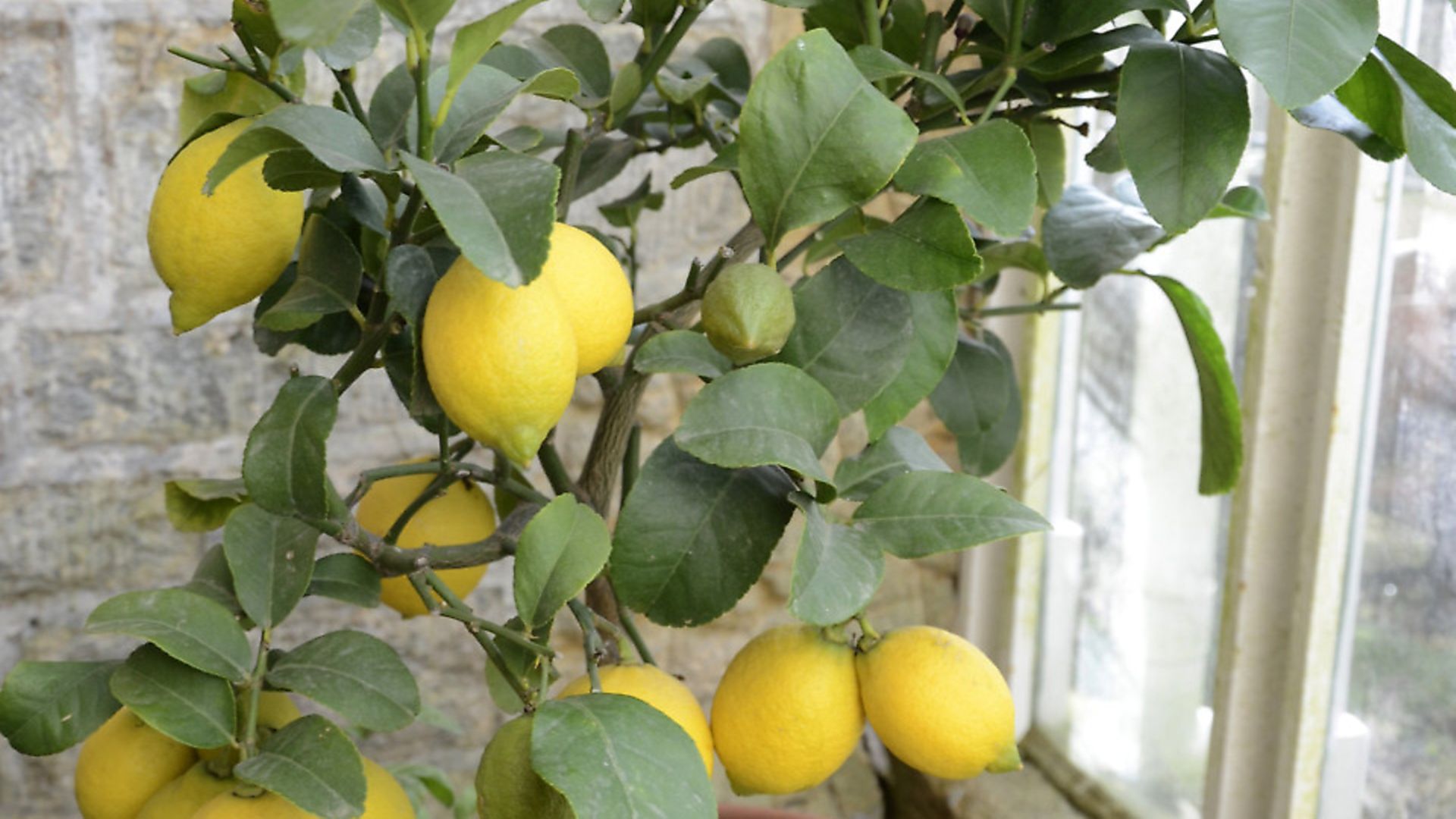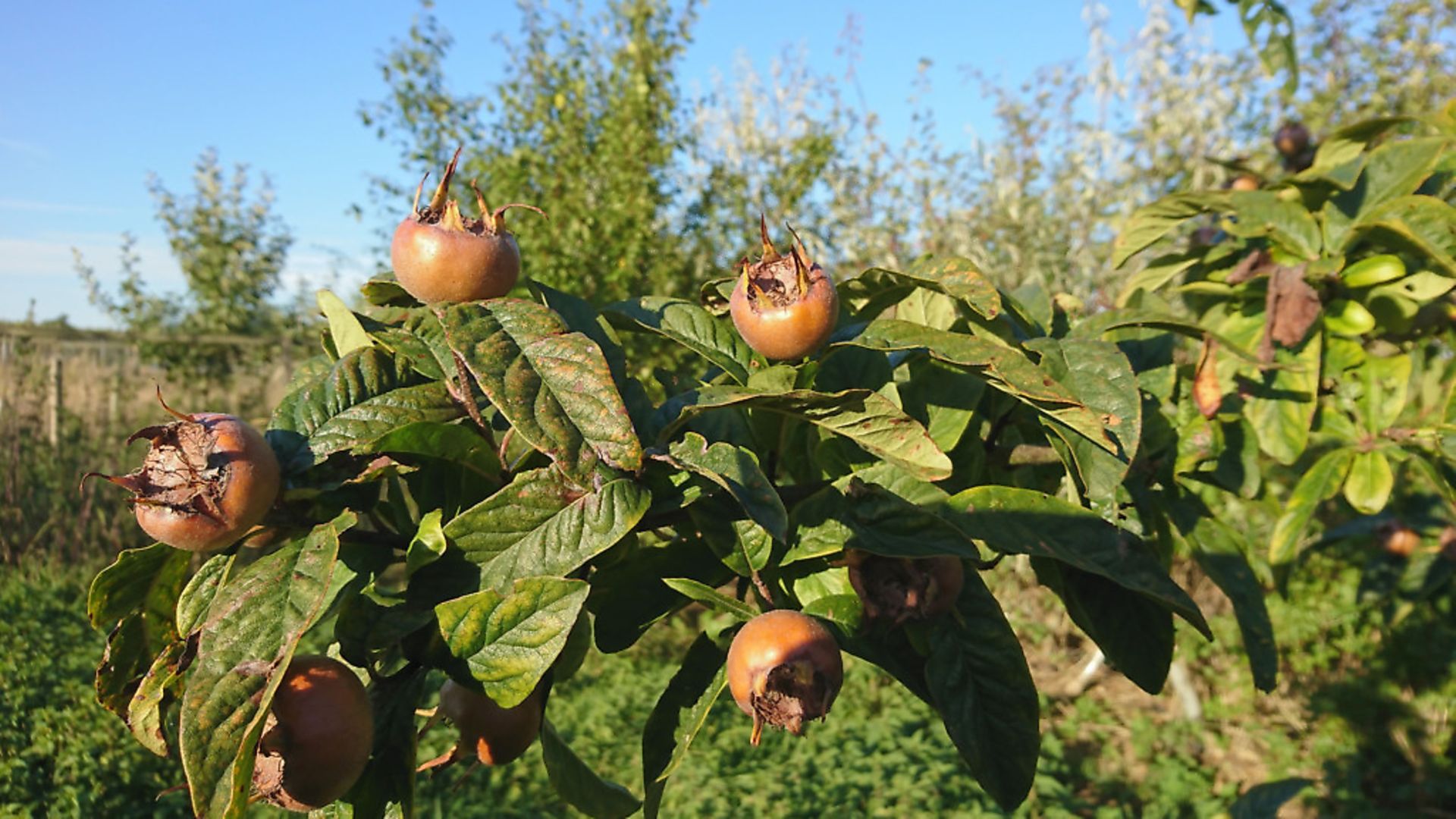In an extract from her new book The Climate Change Garden, co-written with Sally Morgan, Country Smallholding’s gardening correspondent Kim Stoddart explains how smallholders can start future-proofing their fruit-growing efforts

We love our fruit trees, either as single specimens, trained against a wall, or as a small orchard on our land. For many a garden is not complete without a fruit tree, but these delectable edibles are coming under threat — from a changing, more erratic climate, loss of pollinators and more pests and diseases.
Mention 2012 to any UK apple grower and they will probably shudder. That year saw one of the wettest UK summers on record. March was particularly warm and blossom appeared early, but just as the orchards were looking at their best, it started to rain and it didn’t stop for six weeks. Harvests were half their normal levels.
So what are the threats as our climate becomes ever more volatile?
The stresses of extreme weather
If we experience rainy winters it is likely that soils will be wet for longer, resulting in slow drainage, and root death caused by waterlogging and trees standing in water. There is also more risk of trees lodging in windy winter weather due to loss of support around the roots. Wet weather can cause problems for young trees in the first few years of their establishment, especially from crown rot caused by Phytophthora. Some rootstocks and varieties are more susceptible, such as MM106.
There are problems associated with hot, dry summers too. Fruit trees can survive a short drought, but a prolonged one causes root stress, defoliation, premature fruit fall and small fruits. The trees can experience heat stress if temperatures exceed 20°C for long periods of time with sun scorched leaves and damaged fruit. Lower rainfall over spring and summer will reduce yield.

Arrival of pests and diseases
Unfortunately an earlier spring and later autumn mean a much longer growing season for our fruit trees and for their pests and disease. A series of mild winters may lead to more pests successfully overwintering and becoming active (hungry) earlier in the year, while warm summers may see an influx of pests from Europe, such as pear blossom weevil (Anthonomus spilotus). There may be more defoliating pests around, and where conditions favour some of our minor pests and diseases we may see them become major pests.
Wet winters, for example, could see a surge in scab caused by Venturia inaequalis, although it will be limited by hot, dry summers. Powdery mildew is a common fungal disease of apples and pears, turning young shoots grey-white, distorting the leaves and causing the blossom to drop. The fungus overwinters in the buds and then becomes active. It is favoured by a hot, dry summer.
How to provide resilience…
Yes, it’s all very worrying, but there are simple actions that can be taken, both now with existing trees and in the future with planting planning to provide greater robustness all round. Here are just a few of the most important considerations:

Mulch
Soils around fruit trees and in orchards are just as important as in the veg plot, so keep them covered.
Spread a thick layer of mulch around the tree in spring, but don’t go right up to the trunk as this can cause rot. This will retain moisture and protect the roots from extremes of temperatures as well as controlling the weeds that will otherwise compete with tree roots for water and nutrients.
If you source wood chip rather than use your own, make sure that the chips have not been taken from wood infected with honey fungus. There is some evidence that willow chip mulch helps to combat apple scab so that’s one source to look out for.
A diverse orchard
Diversity is often key to success. If you are planning a new orchard, however small, try to choose a wide range of varieties as this will make your orchard more resilient. If you are choosing apples, mix up the dessert, cider and cooking varieties and their time of harvest, and choose different pollination groups to ensure successful cross pollination. A diverse orchard will support a wider range of insects and other animals too. As well as mixing up the apples, try to include other fruits, including pears, plums, damsons, medlars, quinces and mulberries. Also don’t forget to check for disease resistance. Late flowering, late maturing varieties generally need more chill hours, especially the cider varieties, so these are better suited to more northern sites.

Choose your site carefully
Try to avoid exposed windy sites or establish a wind break. Prepare the soil well with good drainage and think carefully about your choice of rootstock. A warm, sunny spot will attract more pollinators, while planting the odd crab apple will provide extra pollination opportunities. Varieties such as golden hornet, winter hornet and red sentinel look good in autumn as well as being functional in spring.
Attract pollinators to your patch
As spring gets earlier there are concerns over pollinators. If there is no pollination, there is no fruit. Research shows apple trees are flowering an average of 17 days earlier each spring compared to 60 years ago and this brings a risk of frost and a lack of pollinators, plus the problems with too few chill hours.
To attract honey bees have a few wild areas in your garden and plenty of nectar-rich flowers. Wild flowers are particularly important as they are better at attracting bees than cultivated varieties. If you have the space, you could think about putting a hive in your orchard. You don’t even have to keep bees yourself; see if a local bee keeper wants a safe home for some of their colonies.
Honey bees are not the only pollinators. There are many more pollinating insects, such as hoverflies and bumble bees, but the most effective pollinators are the solitary bees. Research has found that 600 solitary bees may be able to pollinate an apple orchard as well as two hives of honey bees. Since hives have between 10,000 and 15,000 occupants that means that 600 solitary bees could potentially do the work of 30,000 honey bees. Solitary bees include the mason bee (Osmia sp). This is a small bee that nests in cracks in walls and mortar. These small, non-aggressive bees can be attracted to your garden through the provision of overwinter sites. They like to crawl into holes in bricks or hollow stems. You can even buy bee bricks that are specially made for mason bees. They also need an area of moist earth in spring in order to collect building material.
Take a walk on the wild side
We are fixated on apple cultivars that are grafted onto a rootstock, but what about the wild apple — the apple that grows from a pip? You see wild apples everywhere. The fascinating thing about them is that you don’t know what you are going to get — a sweet eater, a tart cooker or one that is great for cider making. And now people are looking afresh at wild apples. This is the origin of new varieties. In the past the shoot of a good tree would be grafted on a rootstock to create a new variety.
Image(s) provided by:
Archant
Archant
Archant
Archant







